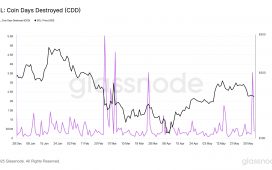1. How Smart Algorithms Can Track Suspicious Behavior
AI technology doesn’t always come in the form of a net new product. Sometimes, it just enhances a well-known device. Video surveillance cameras, for instance, when powered by AI, can be used to help prevent theft, not just usher along an investigation once the theft has occurred.
AI technologies use smart algorithms to recognize suspicious behavior and alert security center staff to the potential threat. In this way, AI can help security professionals develop a clear understanding of what’s going on across both the store and the supply chain, improving all facets of inventory control.
Similarly, surveillance cameras equipped with face recognition technology can flag known shoplifters anytime they enter a store and alert security personnel to either monitor them or — if they’ve been banned from the premises — escort them out.
Because repeat offenders account for more than 40 percent of all incidents where a suspect is identified, embracing this technology can greatly benefit retailers that struggle to combat external theft. Along with radio-frequency ID systems, cash automation technology and more, AI loss prevention solutions can help combat all sources of retail shrinkage.
For instance, according to McKinsey, using AI-powered forecasts in supply chain management can reduce errors by up to 50 percent, in turn reducing lost sales and product unavailability by up to 65 percent.
LEARN MORE: How retailers will make strides in stores and beyond the web.
2. Double Down on Security Devices
The Internet of Things can dramatically improve security. Using sensors to connect to the internet, IoT devices can track inventory levels in real time and monitor store activity (including customer traffic and employee behavior) to identify potential internal and external theft and other security issues before they happen.
For instance, IoT cameras equipped with face recognition can be used to ensure only authorized staff have access to certain areas of the store, making it easier to prevent unwanted people, whether a customer or unauthorized staff member, from entering off-limit locations and possibly doing something they shouldn’t.
3. Why Adding More POS Cameras Can Reduce Theft
Whether bolstered with AI or just simple, traditional technology, increasing the number of surveillance cameras at point-of-sale areas can help prevent retail shrinkage. How? By providing visible proof point of the store’s POS security.
Among those surveyed, 56 percent of U.S. shoppers and 82 percent of employees agree that self-checkout makes it easier to shoplift, largely due to a lack of security measures, and 24 percent of people admit to having intentionally stolen at a self-checkout location.
So, as the improved performance of POS cameras — especially, AI-enhanced POS cameras —becomes known, increasing the number of POS cameras will strengthen more than just the appearance of store security. It will strengthen actual security as well.
EXPLORE: The benefits of enhanced video in retail.
4. Use Data Analytics to Identify Losses
Whether by using RFID tags or other technologies, retailers can apply data analytics to better monitor inventory levels and identify potential losses.
With RFID or IoT devices, monitoring can even be done in real time, making it easy to call out and investigate losses quickly — not weeks or months later when pulling together reports, but closer to when the shrinkage happens.
This is especially helpful for determining internal causes of shrinkage, such as internal theft or process failures, empowering retailers to respond swiftly and mitigating losses before they become more prevalent.










